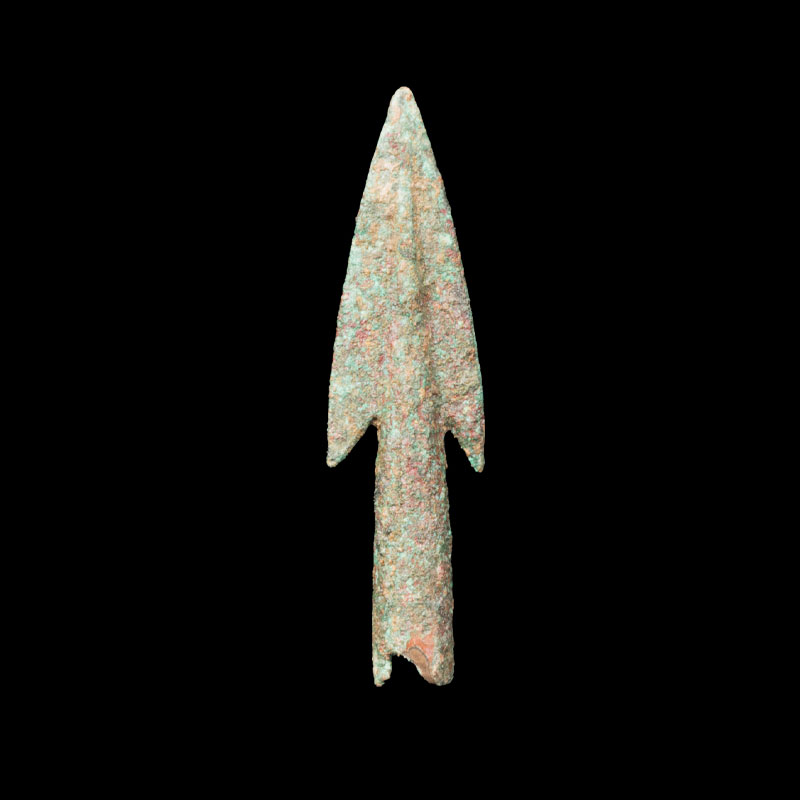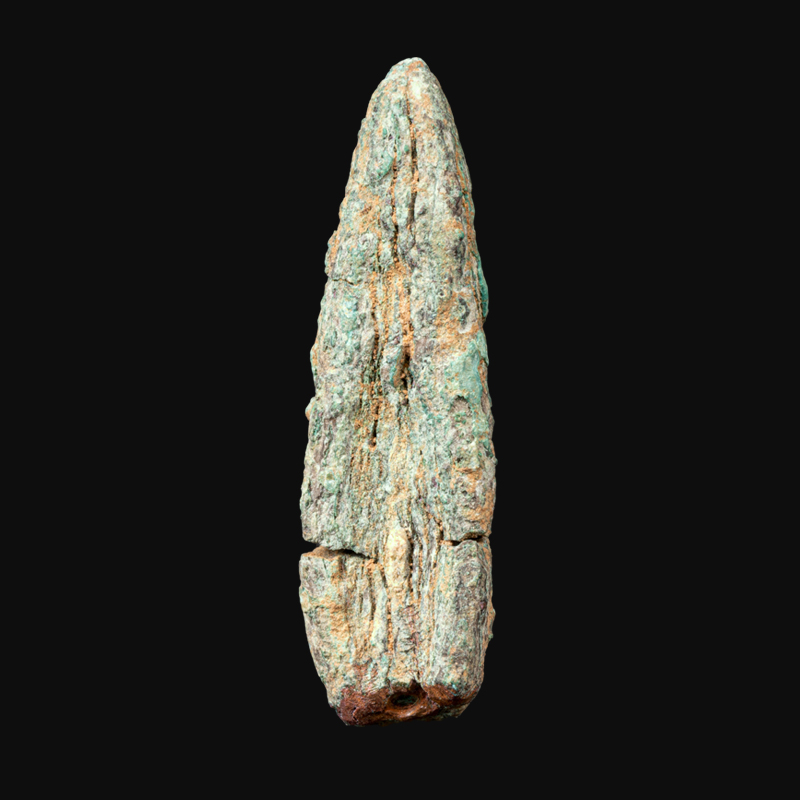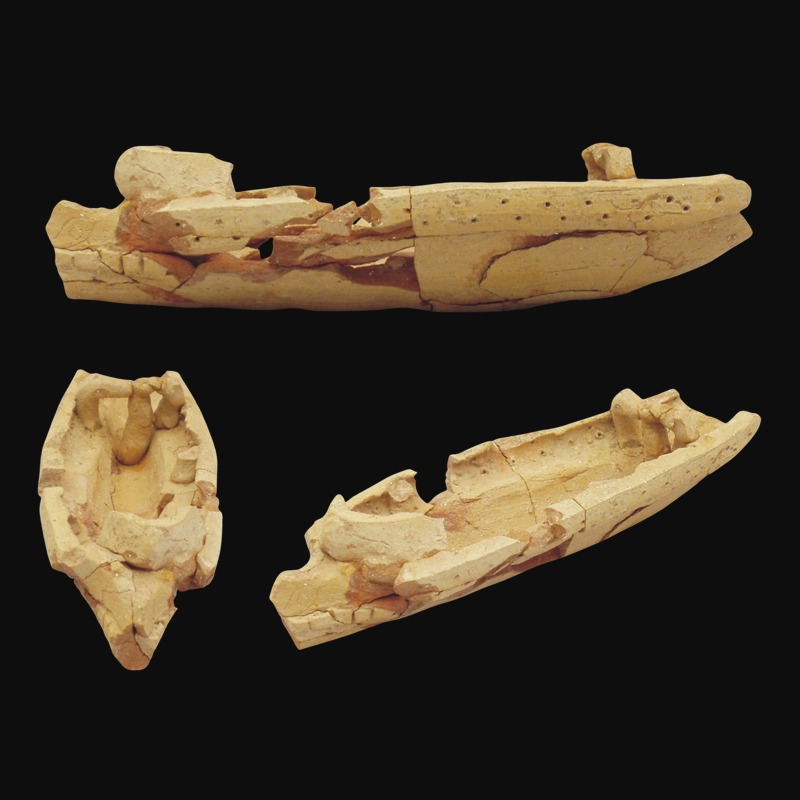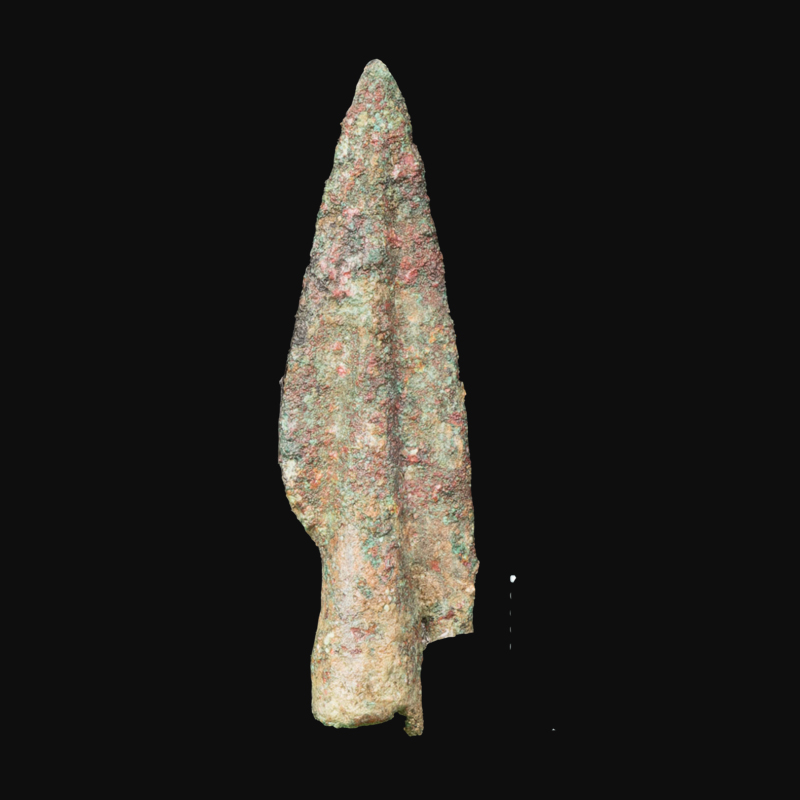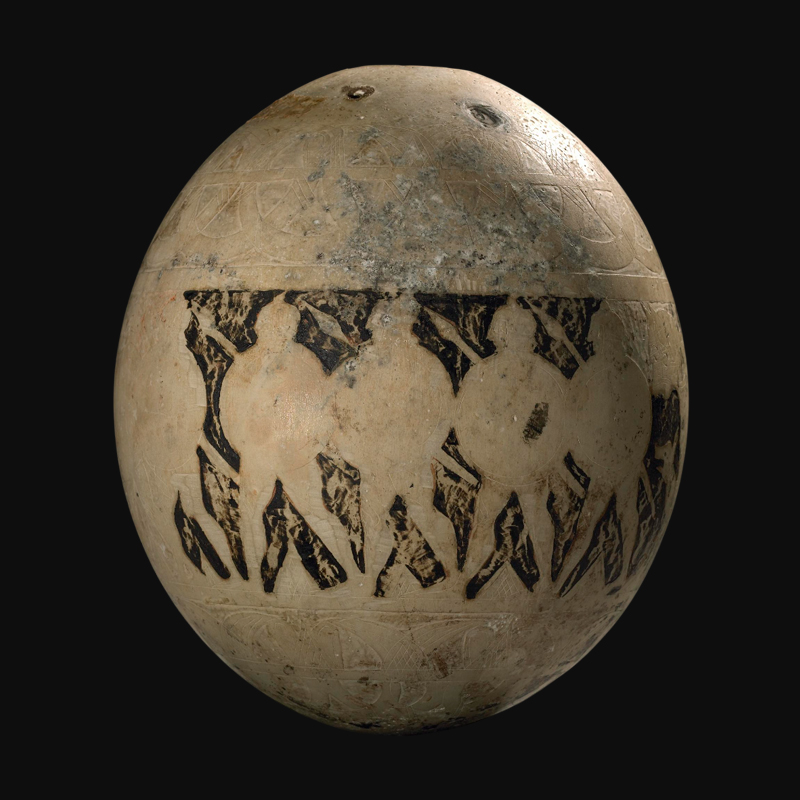Bronze arrowhead
Punic Birrem
Bronze arrowhead
Ostrizo egg container
Phoenician colonization in the West was characterized by its commercial approach, although not free of conflicts. Contacts between eastern groups and native populations were mostly peaceful, but there were also periods of violence.
The strategic choice of defensible coastal locations, peninsulas, to establish colonies is evidence of a defensive strategy when settling.
PIRACY
Despite their commercial focus, the Phoenicians also resorted to piracy on certain occasions. The search for resources led them to armed raids against coastal settlements and commercial boats. This duality between trade and piracy reflects the complexity of economic activities in the ancient Mediterranean, shared by Phoenicians, Greeks and Etruscans.
“Because in ancient times the Greeks and the barbarians of the coast and the islands, once they began to interact with each other by sea, dedicated themselves to piracy under the command of more powerful men, who sought their own profit and means of life for the weakest: and falling on communities that lacked walls and lived distributed in villages, they plundered them and took most of their resources from there, since this way of proceeding did not yet produce shame, but rather sought a little glory.” Thucydides (History of the Peloponnesian war) I, 5, 1.
ARCHAEOLOGICAL EVIDENCE OF VIOLENCE
Violence during Phoenician colonization is evidenced by historical sources and archaeological finds, such as weapons found in burials. In the settlement of Dalt Vila, more than 75 arrowheads were found, indicating episodes of conflict. Furthermore, fortifications such as those of La Fonteta (Guardamar del Segura, Alicante) show defensive systems to protect themselves from external and internal violence. Piracy, occasionally present, was mixed with trade, adding an additional component to economic activities.
“But returning to the brave Dionysius the Phocaean, after he saw the affairs of the Ionians completely lost in the battle, having seized three enemy ships in it, he left there with the intention of not returning to Phocaea, his homeland, since He had clearly seen that she and all of Ionia would eventually be made a slave of the Persians. He therefore decided to head from there towards Phoenicia, where, as he had seized many cargo ships, already rich with so much plunder, he sent them off to the bottom and set sail for Sicily. There he took up piracy, often leaving those ports, without touching any Greek ship, however, and capturing all the Carthaginians and Tuscans he could catch. “(Herodotus VI, 17)
“The number of the triremes was twelve hundred and seven, and they were furnished by the following: the Phoenicians with the Syrians of Palestine furnished three hundred; for their equipment, they had on their heads helmets very close to the Greek in style; they wore linen breastplates, and carried shields without rims, and javelins. “ (Herodotus VII, 89, sections 1 and 2)
Sa Caleta
on the war
From
Sa Caleta
on the war
EIVISSA STRATEGIC POINT
The choice to establish the colony on a peninsula, protected by a deep ravine, reflects an act of prudence and the search for security for the population. Although no fortified structures have been found in Sa Caleta, it is likely that the erosive action of the coast has deteriorated and destroyed possible archaeological remains. Despite this lack of significant defensive structures and the clear vulnerability to attack from the sea, this situation greatly contributed to the decision to move the population to a more appropriate and protected location, such as the heights of today’s Dalt Vila in Ibiza.

